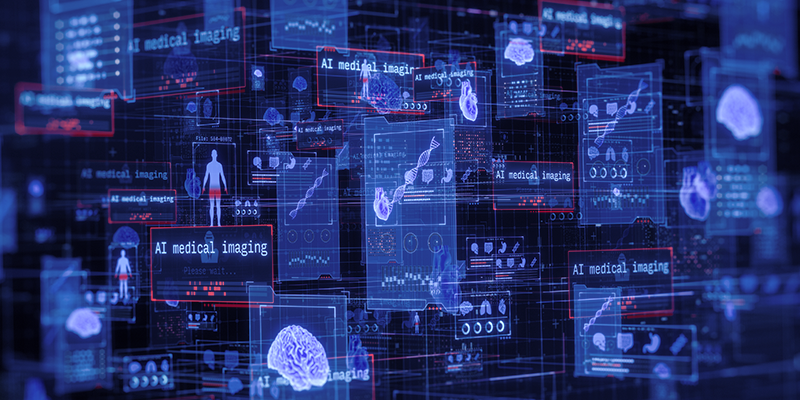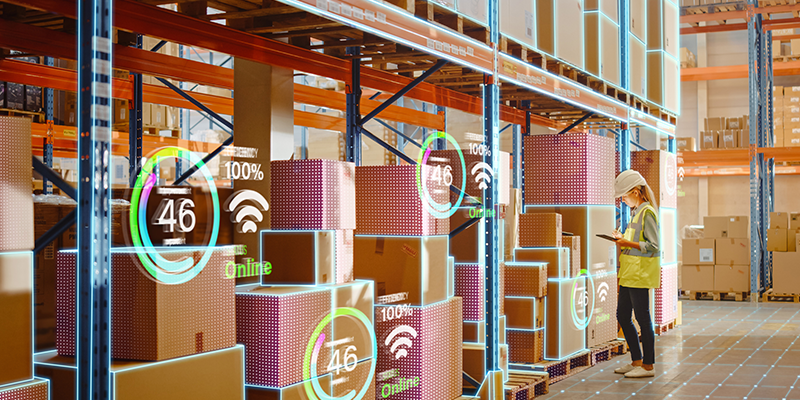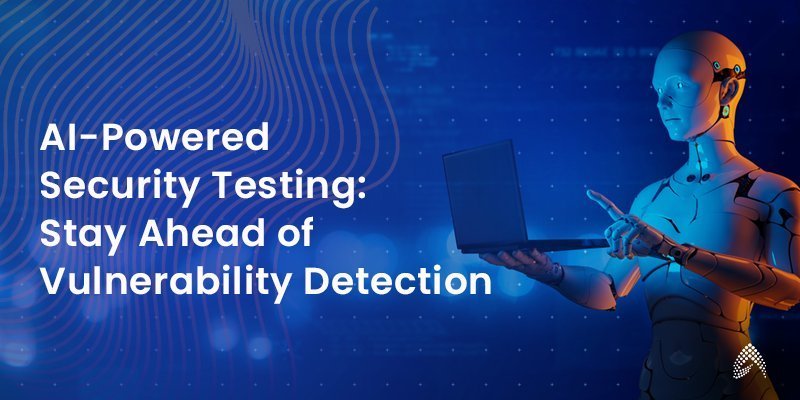Edge Computing Technology: How It Differs From Cloud Computing

What if you can process your enterprise data at its origin rather than sending it to a centralized server? Undoubtedly, you can save time, reduce latency, and improve data security, Right!
The 21st century has been full of technological revolutions. From the evolution of the internet to the current Internet of Things (IoT), we have witnessed many paradigm shifts at the enterprise and customer levels. This is especially true over the past decade as we have been using smart devices and cloud solutions in our daily lives.
With the adoption of these smart and IoT-connected devices, data collection and computing has seen an exceptionally high surge in recent years. This helped coin a new term — edge computing technology — which is a strategic way of processing data closer to the device where it is being generated instead of a centralized cloud or data storage location.
In 2021, IoT Analytics expects the global number of connected IoT devices to grow 9%, to 12.3 billion active endpoints. By 2025, there will likely be more than 27 billion IoT connections.
Let’s look at how edge computing technology differs from cloud computing.
What is Edge computing?
Data is the lifeblood of any organization. It helps businesses forecast growth and make well-informed decisions to navigate uncertain times and win the race. On the other hand, latency in data processing can result in ineffective decision-making and eventually lead to business disruptions.
Edge computing is a distributed information technology (IT) architecture in which the data is processed near the network. With the growing number of domestic and industrial IoT-connected devices, there is a flow of data to process with low latency and high accuracy. Rather than transmitting all data gathered from devices, edge computing technology avoids last-mile latency problems by allowing you to process data locally at the source.
Growth of Edge computing from 2017–2028

5 Best Benefits of using Edge computing:
Edge computing technology benefits 1: Speed and latency
The longer it takes to process data, the less relevant it is. Processing needs to be quick and accurate enough for quick decision-making. Cloud computing technology allows you to collect and compute data faster with no latency issues.
For example, in your automobile, sensors collect data every second and evaluate the levels of fuel consumption, air, and other parameters. Any delays in data processing could lead to disruptions in your journey.
Edge computing benefits 2: Security
Since edge computing relies on processing data locally, your infrastructure is less prone to vulnerabilities. This ensures better security than distributed systems. Edge computing solutions also allow companies to overcome regulatory and compliance challenges.
Edge computing benefits 3: Cost savings
As mentioned, the growing number of smart devices and IoT-connected devices has caused the need for data processing to surge equally over the past two decades. However, all generated data is not equal when it comes to storage and processing.
Edge computing technology helps you segment mission-critical data from generated data and further reduces computing time, complexity, and costs. Edge computing isn’t about eliminating the cloud; it is about optimizing data flow and eliminating data redundancy.
Edge technology benefits 4: Greater reliability
Though the cloud solutions are advanced and secured, they have some built-in limitations while transmitting and processing data. Any disruptions in an internet connection can significantly impact performance for a while.
Whereas in edge computing, data is processed locally and consumes less bandwidth compared to cloud processing. With prefabricated local data centers, edge computing technologies ensure greater reliability.
Edge computing solutions benefits 5: Scalability
Scalability is one of the best benefits of edge computing technology. Since it doesn’t need to transfer every speck of data to the centralized server, you can deploy IoT devices along with their processing and data management tools at the edge. This ensures better scalability without a hefty upfront investment.
What is cloud computing technology?
Everyone is talking about cloud technology and cloud applications. Many would be surprised to learn about the value it brings to our day-to-day lives, and that they are already using cloud computing solutions.
In a nutshell, cloud computing is the on-demand delivery of IT resources over the internet, with pay-as-you-go pricing. These cloud services include accessing storage, servers, database, networking, software, analytics, and intelligence over the internet for faster innovation, flexibility, and growth at a scale.
Unlike traditional business models, you typically pay only for the cloud services you use, which helps save both budgets and maintenance costs. With cloud computing solutions, you can run your infrastructure more efficiently and scale your business at any time and at your own pace.
Check out the blog to learn more about cloud computing technology and how it benefits your business.
What are the differences between cloud computing and edge computing technologies?
There are four factors that differentiate edge computing technology from cloud computing.
| Cloud Computing | Edge Computing |
|---|---|
| On-demand delivery of services includes storage, servers, database, software, and infrastructure over the internet. | Refers to the deployment of data handling or other network operations away from the cloud servers and to the edge of the network. |
| Data centers are located around the world, providing global access. | Brings computation closer to the network edge where the data is gathered at the source. |
| Average response time is minutes. | Faster than cloud computing with a response time of milliseconds. |
| Requires a huge bandwidth for computation. | Requires less bandwidth compared to cloud computing solutions. |
Cloud & Edge Computing in Action: Impact on Healthcare, Insurance, and Retail Industries
Digital-first enterprises don’t choose between cloud or edge anymore—they orchestrate both. Below is a field guide to where the two paradigms deliver the most value in healthcare, insurance, and retail, with a focus on data management, migration, and security.
Healthcare:
Data management & migration
Edge nodes pre-filter raw waveforms—ECG, glucose, imaging—then send only relevant features into HIPAA-compliant cloud lakes. This tiered pipeline slashes bandwidth, lowers storage cost, and simplifies EHR integration.
Security front line
Processing PHI close to the device reduces attack surface; encrypted uplinks and cloud-native zero-trust frameworks guard data centre workloads. Intel notes that hybrid edge-cloud strategies help providers meet privacy mandates while still sharing anonymised datasets for research.
Real-world pulse: Red Hat reports rural clinics using edge gateways to deliver tele-cardiology where backhaul is unreliable, giving doctors real-time telemetry despite bandwidth drops.
Insurance:
Data management & migration
Policyholders generate torrents of IoT data. Edge analytics compress, label, and encrypt trip segments before pushing summaries to the insurer’s cloud. When carriers modernise mainframes, cloud migration programmes shift decades of policy data into scalable lake-house architectures for AI underwriting.
Security front line
In-vehicle edge devices keep raw biometrics and GPS traces local, forwarding only tokenised scores. Once data hits the cloud, immutable object storage and automated key rotation harden compliance with NAIC model laws and GDPR.
Data management & migration
Camera feeds and RFID pings are processed on micro-servers in the stockroom; only aggregated foot-traffic heatmaps travel to the cloud. During cloud migrations, retailers refactor legacy ERP and POS data into microservices that feed both headquarters dashboards and edge endpoints.
Security front line
Edge nodes store no customer PII; loyalty IDs are hashed before uplink. Central cloud platforms layer PCI-DSS tokenisation and AI-driven fraud analytics. McDonald’s Google Cloud partnership illustrates how edge AI at 40,000 restaurants powers voice-ordering while central cloud crunches promotions and maintenance data. [WSJ]
Moving Forward
- Assess workload gravity. If a decision’s value decays in milliseconds—think crash-avoidance in telematics—process at the edge first.
- Design for portability. Containerise micro-services so workloads can fluidly relocate between rigs, stores, clinics, and clouds.
- Implement zero-trust everywhere. Identity-centric security must span IoT endpoints to multi-cloud clusters.
- Pilot, then scale. Start with a single edge node feeding a cloud lake; validate ROI before rolling to hundreds.
Hybrid cloud-edge architectures are no longer experimental—they are operational imperatives that unlock real-time insight, slash risk, and protect data from device to boardroom. Organisations that master this continuum are setting the pace for digital transformation in every sector they touch.
Conclusion:
The need for edge computing is growing enormously with the rise of IoT-connected devices. Both cloud and edge computing have become game changers for digital transformation and for making enterprises future-ready.
These technologies can help you optimize data processing and increase efficiency while securing mission-critical data. If you are on the verge of taking your business to the next level but want to avoid hefty upfront investments and maintenance costs, then 2022 will be a great year to embrace the change.
Hosting your business on the cloud and processing data at its source will certainly help you save time and money.
Are you looking for a solution that can keep your business up and running while minimizing your carbon footprint and improving your overall performance? Then, it’s time to collaborate with an experienced cloud computing services provider who can meet your business vision.
Amzur has been one of the leading cloud computing solutions providers in Tampa, Florida, USA for the past 16 years. We have helped many small and medium-sized businesses seamlessly migrate their operations to the cloud to eliminate unforeseen disruptions and navigate uncertain times.
Our cloud computing services help you with
- Protecting from data leakage.
- Keeping your business and infrastructure safe.
- Reducing carbon footprints by at least 40%.
- Automating business operations to devote your time on strategic planning.
- Improve data security and privacy.
Want to know more about cloud adoption and edge computing and how can it bring fathomless opportunities for your business in the future? Our cloud experts are ready to help you with a 45-minute free consultation call.

Director – Global Delivery




